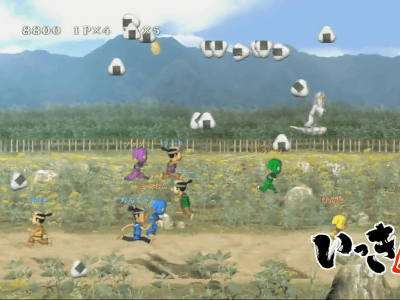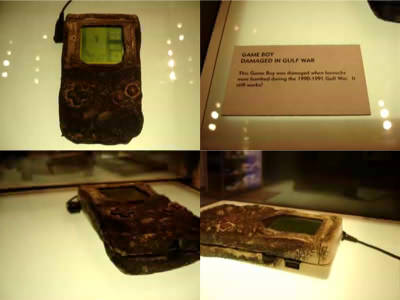The legendary demo ``Eclipse'' that led to the development of 3D games such as Nintendo's Star Fox, Super Mario 64, The Legend of Zelda: Ocarina of Time, and how a 17-year-old from the UK determined Nintendo's future direction

There is a game called ``Eclipse'' that was once created by a teenager and is said to have had a major influence on Nintendo's 3D games. John Raildin of Nintendo World Report, a Nintendo information site, explained how this game was created and passed on to Nintendo.
Eclipse: The Demo that Sold 3D to Nintendo | Video Game History Foundation
In 1992, Nintendo released a game titled 'X' for the Game Boy. The genre is shooting, and Issei Todaka, also known as 'Totake,' participated in the music production, and 'X', which is known as a game that achieved groundbreaking 3D at the time, was actually programmed by a young man named Dylan Cuthbert. It seems that it is based on a demo called 'Eclipse'.
The story of Eclipse begins at Argonaut Software in the north London suburb of Edgware. Argonaut Software was a studio run by teenagers, led by a man named Jez Sun. Argonaut Software's specialty was 3D games for home computers, and the company was known for creating smooth wireframes and full-polygon flight combat scenes.
Mr. Cuthbert joined the company at the age of 17. Mr. Cuthbert discovered the Game Boy four to five months after joining the company. Mr. Cuthbert was good at programming the 8-bit microprocessor Z80 , and the Game Boy, which can be said to be a variant of the Z80, was exactly the object that could be called Mr. Cuthbert's specialty. Mr. Cuthbert, who met the Game Boy, had the ambition to run 3D games on the 2D machine Game Boy, and completed the development of a 3D engine for the Game Boy.
After developing the 3D engine, Mr. Cuthbert tried to reproduce the games he liked at the time in 3D. It is said that the 'Eclipse' in question was born through various trial and error.

Eclipse is a game where you control a tank in 3D space, defeating a certain number of enemies, collecting crystals, and returning to your base. There are concepts of fuel, missiles, and shields, which can be replenished by selling the crystals you bring back. Once the goal is achieved, the player will proceed to the next stage with the equipment inherited.
A feature of Eclipse is that there is a ``3D tunnel section'' between stages, and there is an event where you have to pass through the tunnel within a time limit while passing obstacles.

Some of these elements have been carried over to X, and the retail version of X also includes an object viewer, allowing players to freely rotate and enlarge the 3D objects used in the game. It was possible to reduce it. Although they look low-resolution when zoomed in on a 2020s display, these 3D objects were unlike anything that had ever been displayed on a Game Boy screen or on any handheld game console at the time.
Eclipse was sent to various publishers by Sun to see if they were interested in developing the demo into a full game. This demo was first taken up by a company called Mindscape, which had developed titles such as ``Paper Boy'' and ``Marble Madness,'' and Nintendo also reportedly expressed interest.
After that, Nintendo signed a contract with Mindscape and agreed to take over the rights from Mindscape. And then, as Cuthbert puts it, he began working with 'Mr. Sakamoto from Nintendo.'
Mr. Sakamoto refers to Mr. Sakamoto Sakamoto, who was involved in the development of game series such as ``Metroid''. Cuthbert said, ``Nintendo's touch has made Eclipse easier to play.We've added Nintendo's humor to the game and added some hidden elements.But what has really changed are the missions.A more Japanese story. Some things came from a Nintendo or Japanese sensibility, others came from the original British gaming feel, and Eclipse is an interesting blend of both. I think it's become something,' he commented, looking back on the production scene at the time.

Eclipse, which was produced in this way, eventually came to be called 'Luna Chase', and this name remained in the English version of the game that was eventually released. However, there seems to have been some uproar in deciding the name for Japan. According to Cuthbert, one to two months before the release, he received a phone call from Hiroshi Yamauchi, who was the president of Nintendo at the time, and suddenly decided to change the name to 'X'.

Thus, X was born, and it came to be regarded as one of the most important games of all time. According to Mr. Raildin of Nintendo World Report, it is the work that created X 'Star Fox' and triggered Nintendo's focus on 3D games, and can be said to be a pioneer of 3D games.
Mr. Cuthbert started his career with this game and worked at both Nintendo and Sony before launching his own company Q-Games in 2001. In 2010, Q-Games and Nintendo teamed up to release the sequel to the original 'X', 'X-Scape', on Nintendo DSiWare.

At the time of writing, the Nintendo eShop that handled titles for Nintendo DSiWare has been closed, so X-Scape cannot be legally obtained. Cuthbert said, ``I'd like more people to play X-Scape.I'd like it to be revived somewhere, even if it's just a remaster.There were a lot of really good games on Nintendo DSiWare.'' So I would like Nintendo to think of a way to revive it.I would also like to make a sequel.''
Related Posts:







